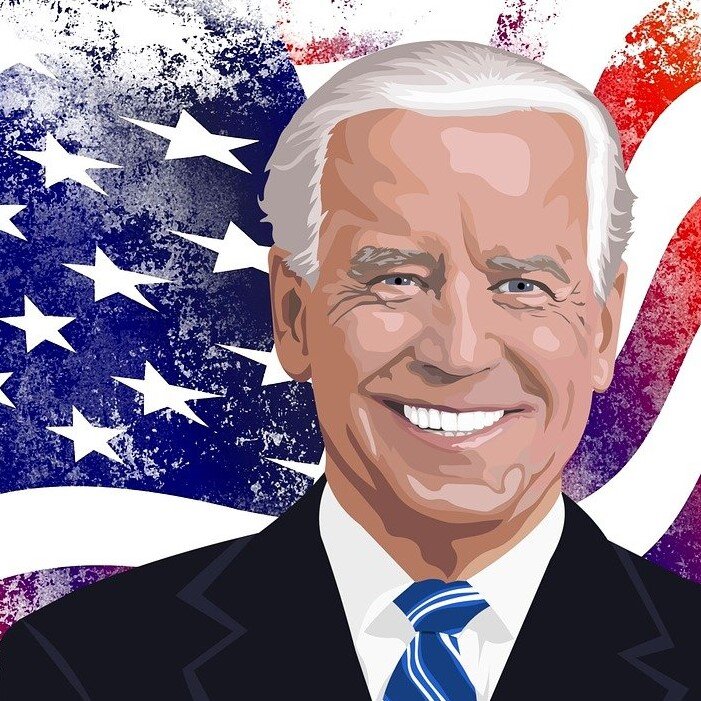Photo by BarBus via Pixabay
The American Rescue Plan, Biden’s $1.9 Stimulus Bill, will be an enormous boost to the US economy. Here’s a brief rundown of the items most likely to affect freelancers.
Stimulus payments:
New $1400 stimulus payments will go out per person on the return. This means that children and other dependents will get the full $1400 each, in addition to the taxpayers. Households with income under $150,000 (married filing jointly) and individuals with income under $75,000 will receive the full benefit. Households with income between 160,000 and 150,000 will get a reduced payment, as will individuals with income between $75,000 and $80,000.
Unemployment:
Unemployment benefits have been expanded by an extra $300/week, and extended to September 6. In addition, unemployment benefits from 2020 will not be taxable up to $10,200 per person ($20,400 in a married filing joint couple). This benefit is retroactive, meaning that it will take effect on your 2020 tax return. If you have already filed your 2020 return, the IRS will do the calculation for you and send you a refund of the taxes you paid on your 2020 unemployment. Do NOT file an amended return.
Money for families with children:
The American Rescue Plan will help families enormously. For 2021, the Child Tax Credit will be expanded from $2000 per child to $3600 per child under 6, and $3000 per child age 6-17. Notably, taxpayers will not need to wait until tax time to claim the credit. Payments will be sent directly to families in monthly installments starting in July 2021. These payments will go to married-filing-joint families earning under $150,000, heads of household earning under $112,500, and married-filing-separate families earning under $75,000. You may calculate your credit using a choice of either your 2019 or your 2020 income - whichever gets you the bigger credit.
The dependent care credit is enhanced for 2021. It will increase to $8,000 for 1 child or $16,000 for 2 or more children. The credit is for 50% of the costs of childcare, which include (as always) babysitters and summer camps so that the parent(s) can work. This means that the maximum credit will be $4000 for one child or $8000 for 2 or more (that is 50% x the cost of care up to $8000 for one child or $16,000 for two). The credit phases out starting at household income of $125,000 (married filing joint), to a reduced benefit of 20% of costs, but a reduced credit amount is still available for families with income up to $400,000.
The Supplemental Nutrition Assistance Program (SNAP) benefit will be increased 15% through September. And K-12 schools will receive over $120 billion in additional funding.
Earned income tax credit (EITC) expansion:
The Earned income tax credit is expanded. It will now include several groups who were not previously eligible:
Age 19 if not a student
Age 24 if a student
Age 18 if an eligible foster child
The age 65 upper limit for the EITC is repealed
Whereas the EITC in its original form was targeted primarily at working families with children, the EITC formula is now enhanced for single people with no children. As with the child tax credit, you may calculate your credit based on 2019 or 2020 income; whichever provides you the bigger credit.
Teacher deduction:
The $250 deduction that K-12 teachers currently receive for classroom supplies paid for out of pocket has been expanded to include the purchase of PPE/sanitizer. The deduction amount remains $250.
Student Loans:
The bill does not provide forgiveness for student loans, as many had hoped. However, any student loans forgiven between 2021-2025 will be tax free. This is a benefit, because forgiveness of debt would normally be considered taxable income.
Healthcare:
For those who have lost a job or had hours cut, the government will cover the full cost of COBRA health coverage through the former employer from April 1 through September 30th.
If you bought health insurance through a government exchange, the cost has been lowered to no more than 8.5% of your total income. This will be automatically applied--so there is no need to take additional action.
For those who would consider buying marketplace health insurance if the prices were more affordable, the open enrollment date has been extended through May 15. You may also use the open enrollment period to switch from your current plan to a lower-priced plan.
Premium tax credits--the advanced payments made to taxpayers that subsidize the cost of their marketplace health insurance--are affected by the law, too. Normally, taxpayers are only eligible for premium tax credits if they have income between 100% and 400% of the Federal poverty level. For 2021, that cap is removed, making more people eligible for premium tax credits. Additionally, under normal circumstances, a taxpayer whose income rises above 400% of the poverty level has to pay back some or all of their advanced credits. For 2020 taxes, this payback will be forgiven altogether. And lastly, if unemployment income raised your income level above the threshold to qualify for premium tax credit health care subsidies, it will not be counted as income in consideration of the premium tax credit.
Grants for Restaurants:
There is a new $30 Billion grant program called the Restaurant Revitalization Grant program. This will give money to struggling restaurant and food service businesses, with $5 Billion earmarked for businesses with gross receipts under $500,000. To check your eligibility and application requirements, see the Small Business Administration website for details and the latest updates.
All in all, the Biden stimulus bill, the American Rescue Plan, will put money in the pockets of the people in the US who need it most. It takes a big step toward a guaranteed income for families with children, lowers healthcare costs, and knits up some of the holes in our social safety net.



